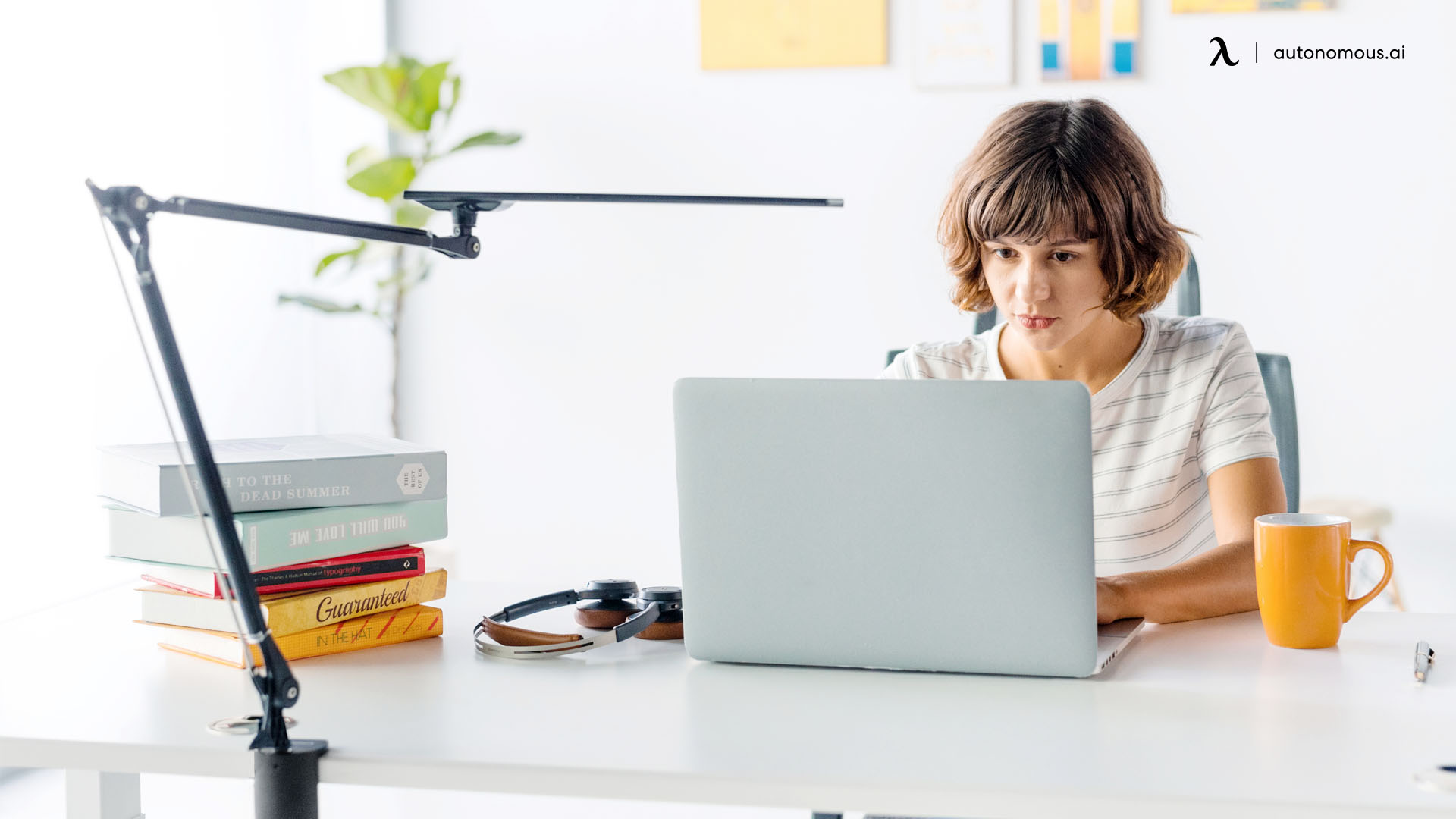
How to Prevent Circulation Problems While Working a Desk Job
Table of Contents
One of the biggest problems we face in a modern office environment is circulation issues. Many office chairs, even ergonomically-designed chairs, have minor issues that can cause circulation problems in the legs. Sometimes they can even pinch the back or put pressure on the shoulders in such a way as to lead to more widespread circulation issues.
Needless to say, the circulatory system is important. Poor circulation can lead to all manner of long-term health problems, including swelling, chills, blood clots, deep vein thrombosis, and even the potential for a stroke. When doctors say that sitting too long may be killing you, they aren’t lying.
So, how can you try to prevent circulation problems? Luckily, there are a lot of options.
Use a Standing Desk
The key to avoiding blood circulation issues is, above all else, motion. You want to be in motion, moving, or in between breaks of motion as much as possible. The actual best option would be to use a standing desk with a treadmill beneath it, but this isn’t possible in most office environments. The typical under-desk treadmill is a loud, annoying device, and it can disrupt and irritate your coworkers, and that just won’t work for most office environments.
That said, usually, a simple standing desk can do the job. You want to have a desk that can transition between sitting and standing, for reasons we’ll discuss momentarily. There are a lot of different considerations you should look into when picking a standing desk, though we acknowledge that most people will choose to opt for something cheap over something quieter or more durable. That said, you have a lot of options available to you, whether you want a converter to turn a normal desk into a standing desk, or you want to get a standing desk to replace your existing desk.
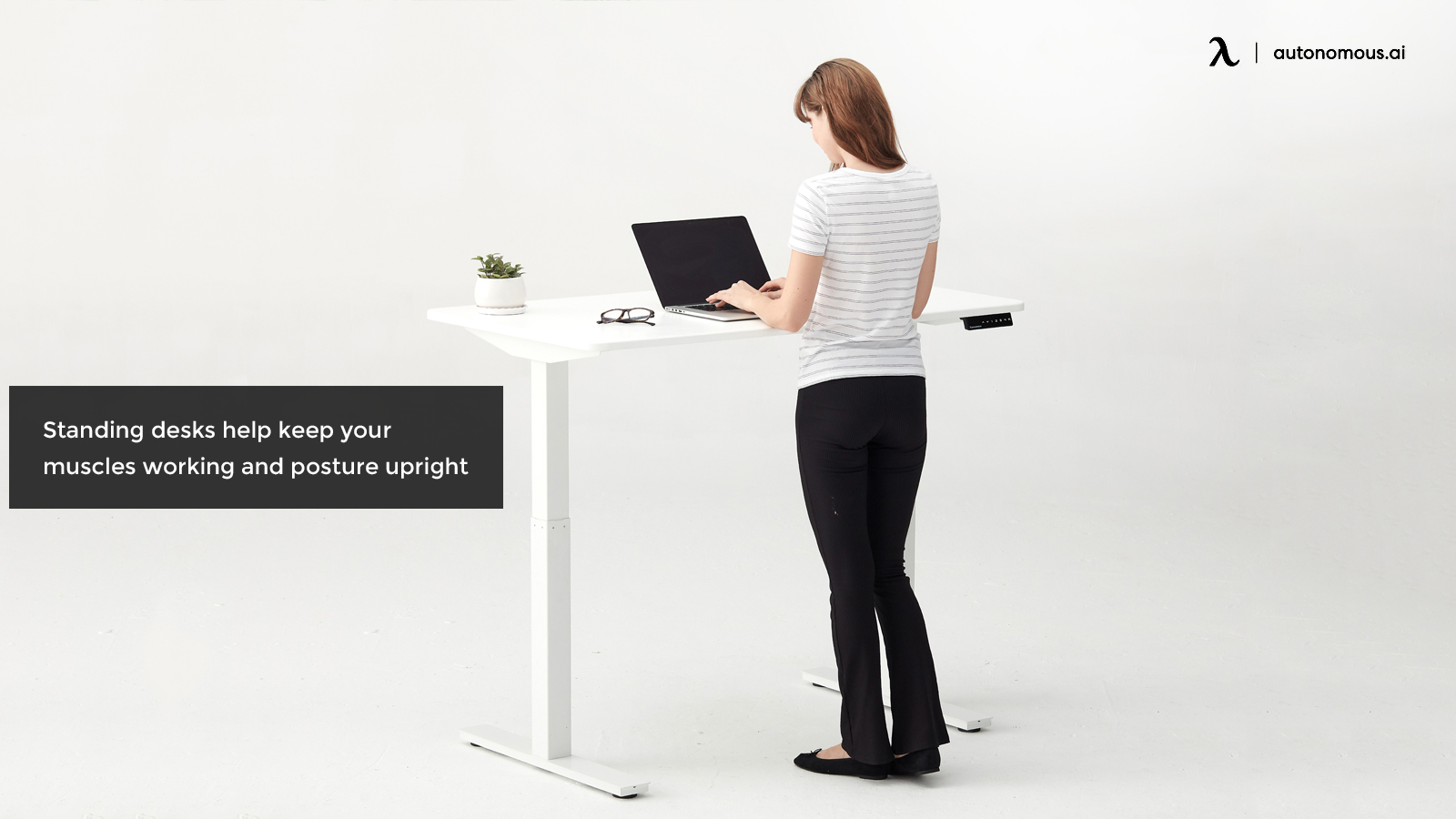
Switch Between Sitting and Standing Regularly
Motion is important, and thus, it can be very important to transition between sitting and standing regularly throughout the day. One of the best things you can do here is to use a timer or an alarm to schedule your transitions between sitting and standing. When you schedule your sessions, you’re given a much greater incentive to transition.
When you move between sitting and standing, you may want to take a break. We’ll talk more about that later, but for now, suffice it to say that this is a good idea. If you can, consider using some of the Pomodoro principles to give yourself adequate time to focus and adjust from one task to the next. You’re going to want to avoid breaking your concentration in the middle of a task, as this can delay finishing it and can lead to a lot of lost time and concentration throughout the day.
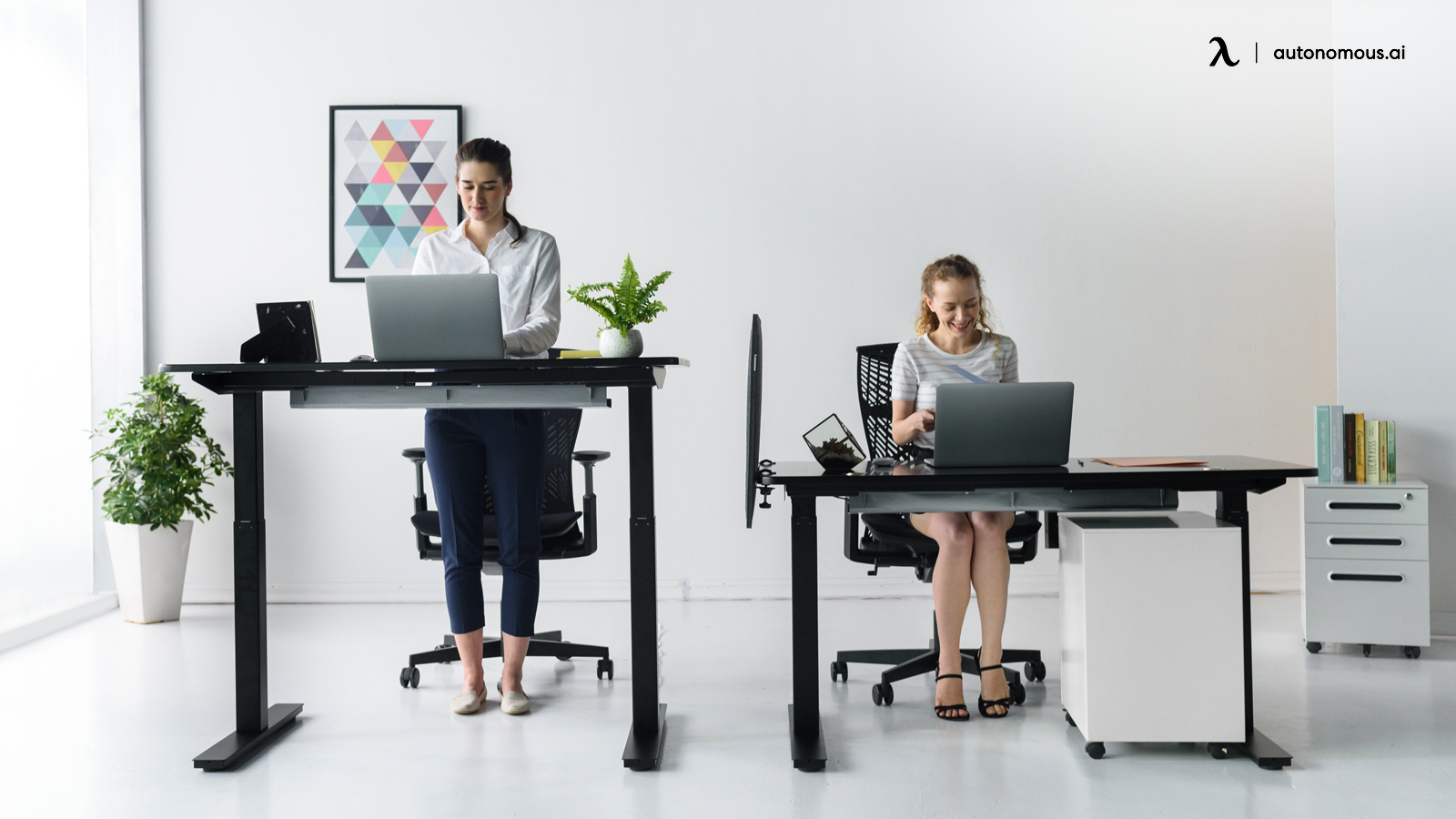
Take Frequent Breaks
Taking breaks about once an hour is strongly advised. When you get up and move around, you get your circulatory system pumping more than it normally would if you spent hours sitting without a break.
When you sit for long periods, your circulatory system slows down, much like your metabolism and other parts of your body. This allows your blood to pool in your legs, which leads to swelling and blood issues similar to clotting, like DVT.
When you take a break, you get up and move. Movement gets your heart pumping, and that gets your blood flowing again. It takes a short time for your blood to settle back down when you stop, so if you routinely get up and move throughout the day, you’re going to keep your circulatory system moving more than it otherwise would.
Stretch and Move
Whenever you take a break, get up and do some stretching. There are a lot of simple stretches you can do using your chair as a balance point, combining some simple aerobic exercises and some basic yoga poses. For example, here’s a set of stretches you can do to help alleviate back pain while you get up and move.
Whether your movement is simply some jogging around the building or a speed-walk to the break room for a fresh cup of joe, the motion is the important part. You want to get your heart rate up a bit – not enough to necessarily consider it a complete exercise, but more than your sitting and resting heart rate.
If you work for a company that offers a complimentary yoga service of any sort, it can be a good idea to participate. Doing some stretching and movement is always a good idea, and you can use it as a time to meditate over the challenges you’re currently facing at your job.
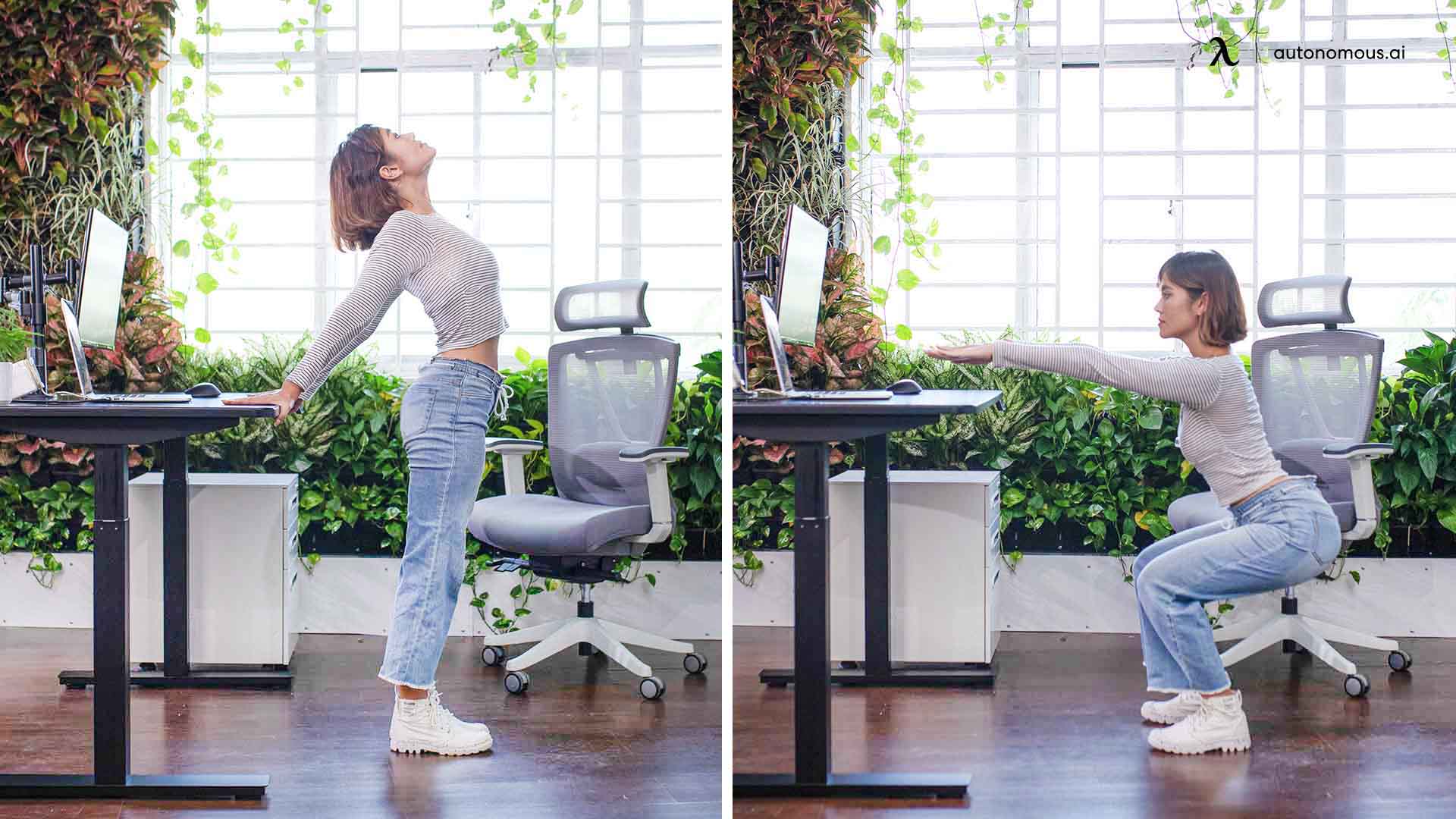
Ensure Your Chair’s Front Lip is Down-Turned
One part of an ergonomic chair design that many people forget is that the front lip of the seat pan should be turned down. It should either be pointed downward, or it should be at most a neutral angle.
See, if the front lip of the chair is straight or pointed upwards, the padding and the edge of the chair can press into the back of your thighs. This is a place where a lot of large arteries and blood vessels flow and is a point where pressure can inhibit your circulation. Thus, the design of your chair can lead to issues that cut off and inhibit blood flow to your legs, causing further blood pooling and stagnant blood issues.
Some chairs have a lever you can use to adjust the angle of the seat pan. While it can feel nice to sink into the chair like a bucket seat, it’s poor ergonomics to do so, and it can lead to back pain as well as circulation issues. Our recommendation is to make the chair tilt slightly forward at the seat, to help give your back a more natural angle, prevent circulation issues, and give you freer blood flow.
Get an Anti-Fatigue Mat
An anti-fatigue mat is typically used when you’re standing for long periods. It’s not going to do much for you when you’re sitting, but if you’re taking the rest of our advice and getting a standing desk to use half of the time (when you transition back and forth), it can be a very good idea to get one.
There are hundreds if not thousands of different anti-fatigue mats on the market. They range from sculpted rubber to lattices of space-age materials to gel-filled pads. It’s difficult to know which one will work best for you, so it’s usually a good idea to read a variety of reviews and consider watching some videos to see which model you like best.
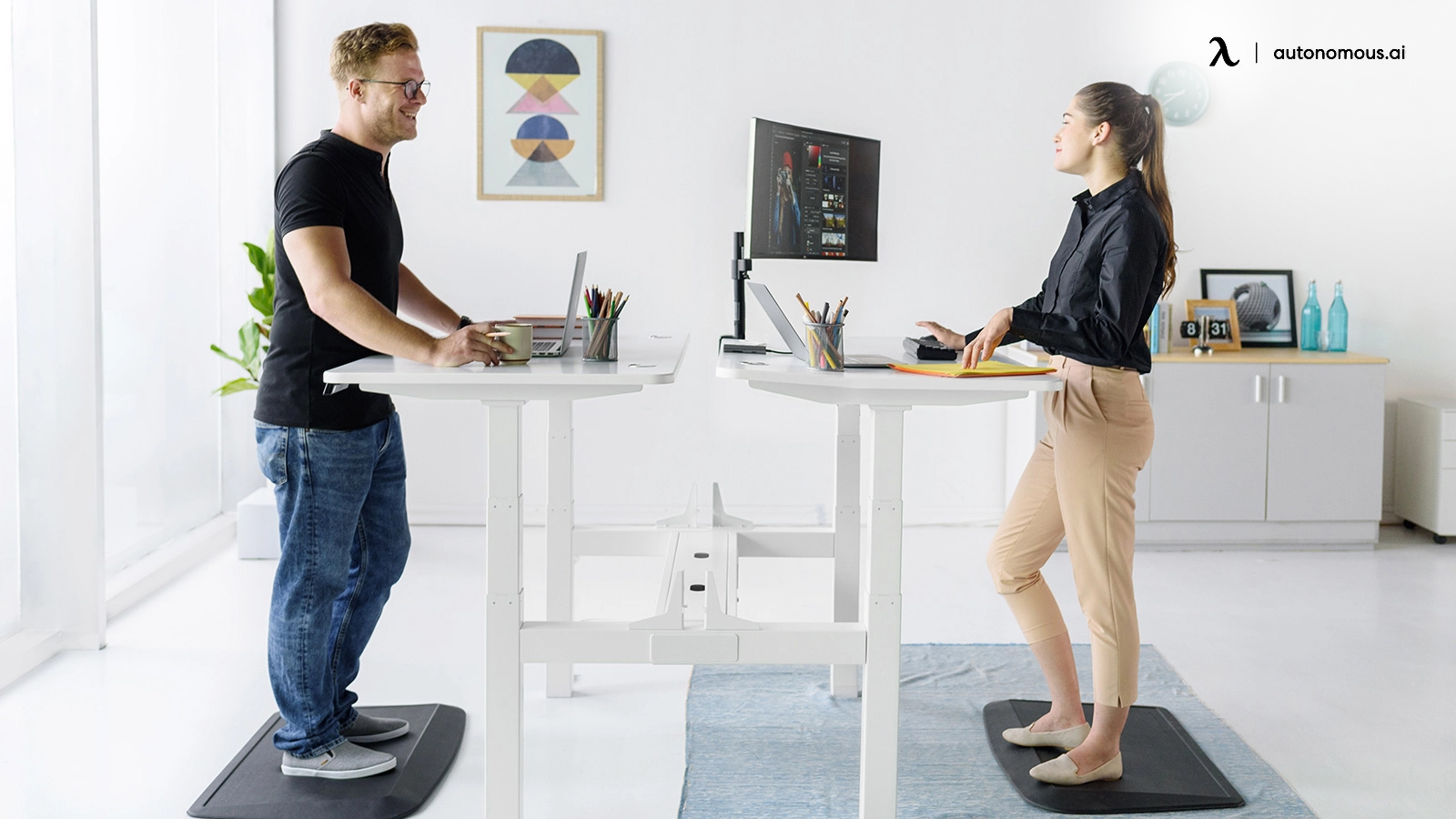
Thankfully, it’s not very difficult to buy an anti-fatigue mat and then return it if it doesn’t turn out to be what you wanted. They aren’t very expensive and they aren’t very large, so shipping them isn’t a huge hassle like it is if you want to return a chair you don’t like.
Our recommendation is to get a relatively small anti-fatigue mat and avoid the ones with gimmicks built into them. You’ll know them when you see them. Most of the time, the gimmick just makes them larger and less mobile, so you have a harder time tucking them out of the way when you’re sitting. Regardless, picking up a basic anti-fatigue mat can make a huge amount of difference in blood circulation and your comfort while standing at a desk.
Wear Compression Socks
Compression socks are a particular kind of sock that is designed to enclose your legs from foot to knee in gentle, omnidirectional pressure. This pressure squeezes your feet a bit more than normal socks do, and it is designed to enhance circulation. The compression of the socks helps your heart pump blood through your legs. It also helps prevent fluid leakage from the capillaries, as well as tissue absorption.
While compression socks are typically recommended for long flights, they can also be very helpful in an office environment. Plus, many forms of compression socks don’t look all that much different from normal socks. You can wear them with a normal outfit and you won’t look out of place in your office.
Compression socks come in two varieties; graduated and anti-embolism. Graduated socks come in a variety of different levels of compression, but they are slightly tight-fitting at the ankles and grow gradually less tight-fitting as they near the thigh.
Anti-embolism socks are a form of compression sock primarily used for bed-bound patients who need help keeping circulation to their legs while they’re stuck in bed after surgery. Since clotting is much more likely to happen when you’re bed-bound rather than sitting, these aren’t typically recommended for office use. Still, you can talk to your doctor if you think you should use this kind of compression sock, or if you’re at risk of an embolism.
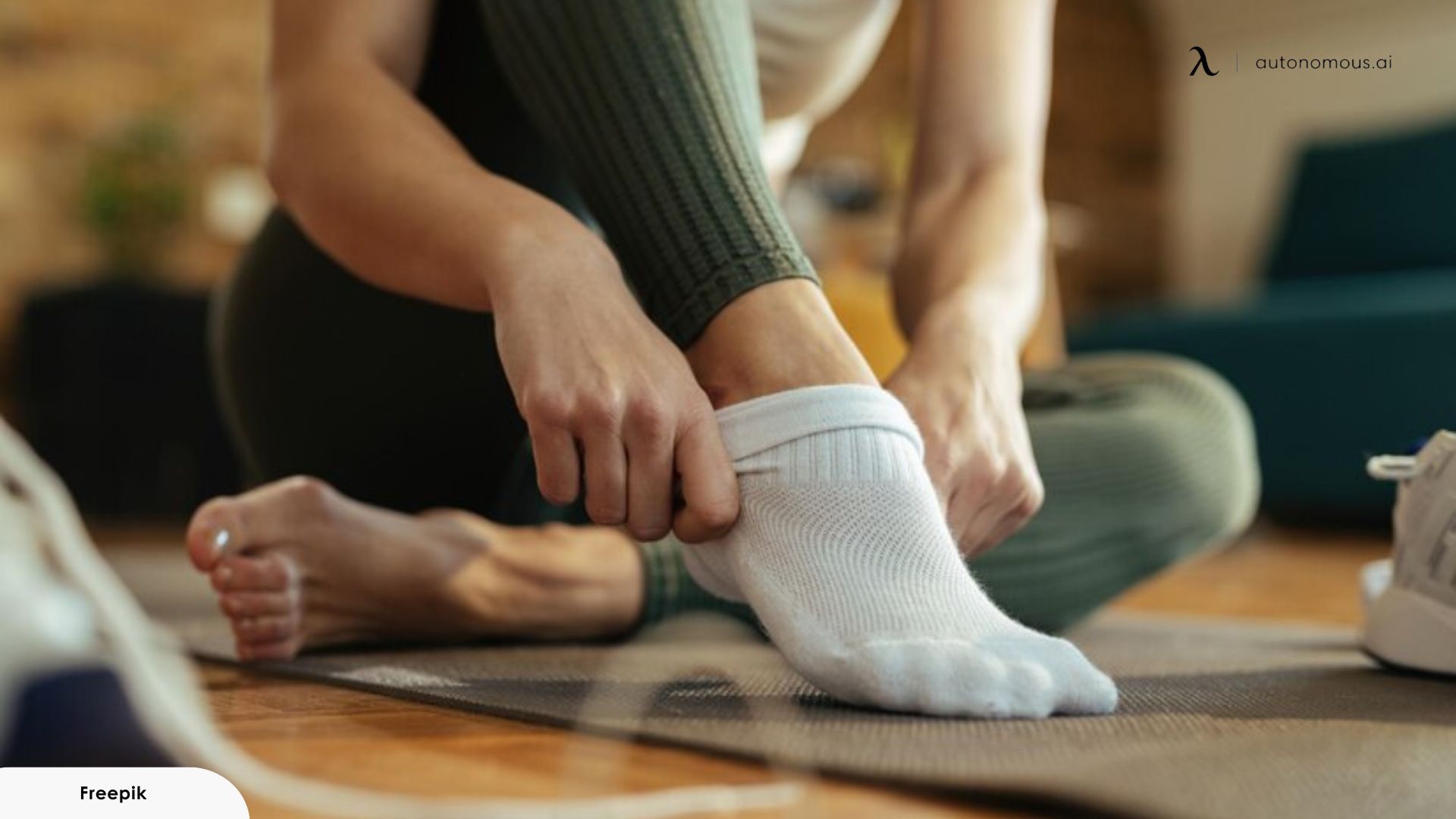
Drink More Water
Did you know there’s more to your circulation than just your situation when you’re sitting? It’s true. One of the biggest and best things you can do as part of maintaining an overall more healthy office life is to drink more water.
In particular, you want to drink water in place of other, less healthy beverages. Soda can dehydrate you. Caffeine can constrict your blood vessels and make your heart have a harder time pumping blood through them. Sugar can accumulate in the bloodstream and makes your blood thick and syrup-like, which is extremely dangerous and can lead to all manner of diseases.
Water helps with all of these issues. We recommend keeping a jug of water on hand and making frequent trips to refill as necessary throughout the day. Remember that you should typically be drinking several liters of water every day, paced throughout the day. Yes, you’ll probably need to take frequent trips to the restroom; that’s fine. Everyone should be.
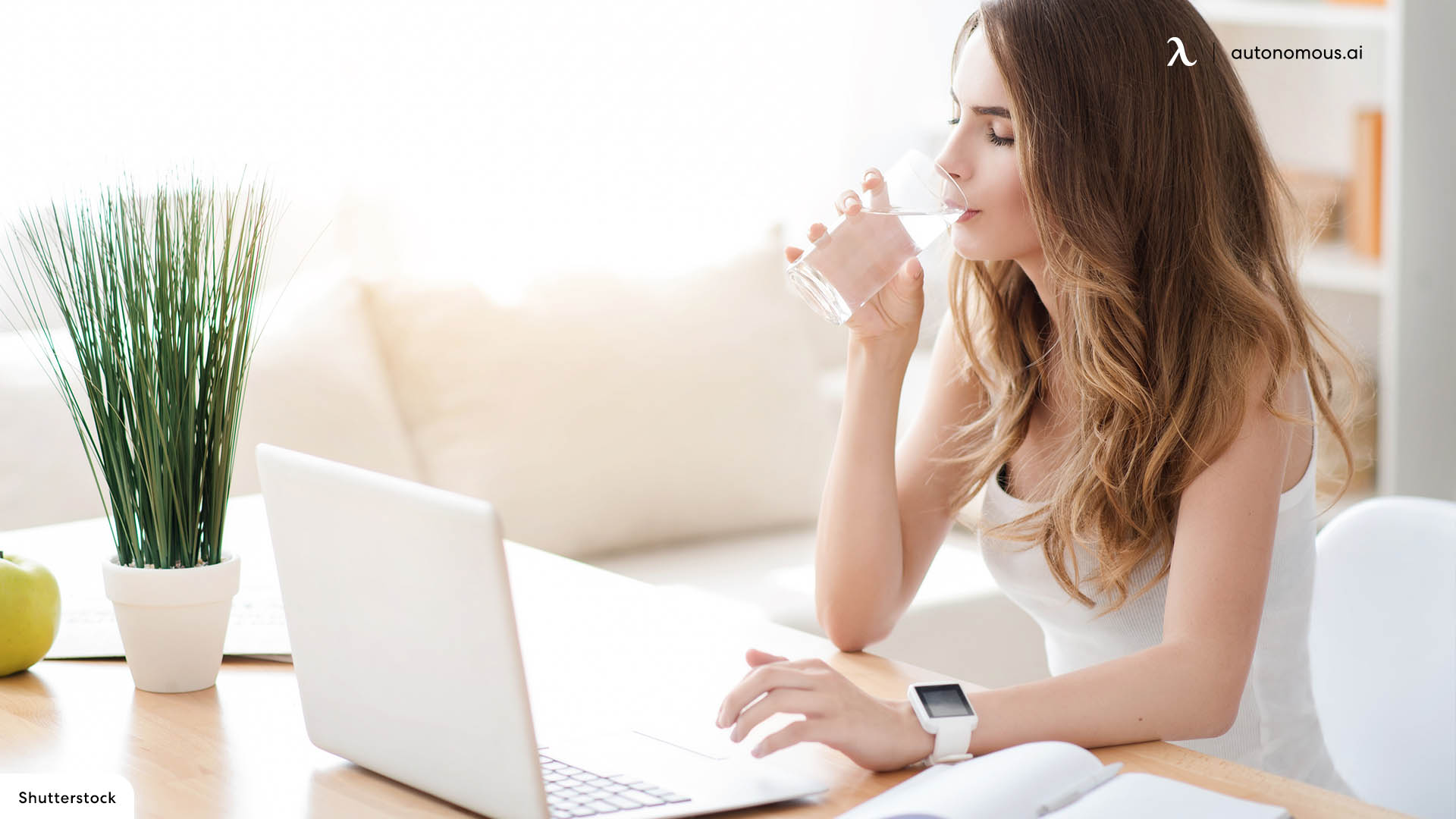
Practice Active Sitting
Active sitting is a unique way of sitting that removes your office chair from the equation. Instead, you’ll be replacing your chair with a stool that requires a bit of balance to use. The stool is cushioned to rest against your rear end, forming a tripod with your legs. Since you have no back to lean against, you’re forced to keep yourself upright. Since you need both legs to keep stable, you can’t hurt your posture by crossing your legs or twisting your hips. The lack of armrests means you’re forced to be more active with your arms while performing tasks.
Active sitting is a powerful technique because of how we sit. When we sit in a chair, most of our body relaxes. This means the few muscles and tendons that don’t relax are forced to keep their effort up all the time, which fatigues them. This is why you get muscle aches from sitting.
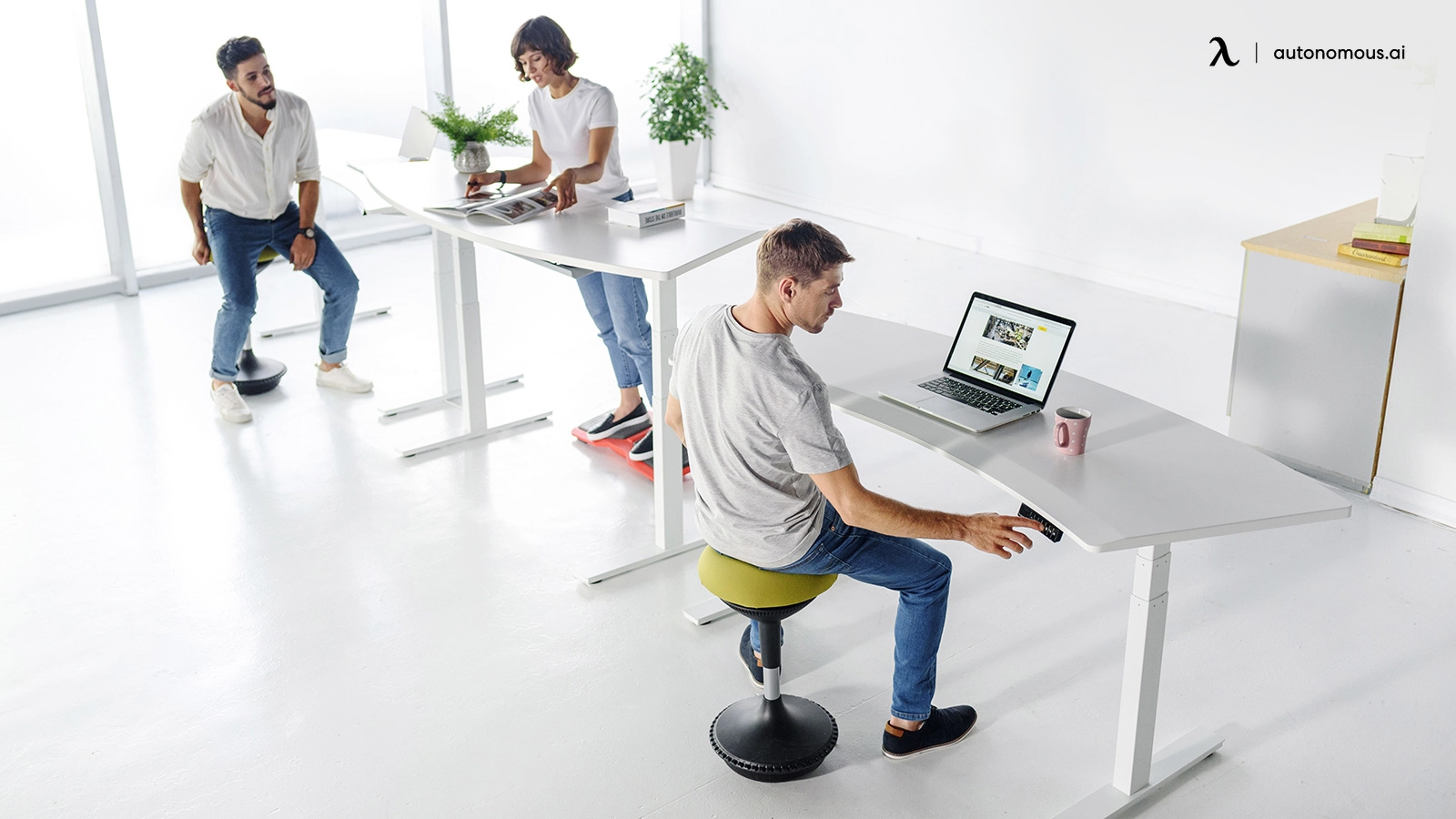
When you’re practicing active sitting, you’re forced to constantly make tiny micro-adjustments in your balance and posture. This tenses and releases a wide range of muscles in succession, which helps balance the load and ensures that you have no injured muscles.
So how does active sitting help with your circulation? Since you’re not able to relax, your heart rate is kept up a little higher than normal sitting. The constant adjustments you need to make with your legs help ensure blood flow through them. Additionally, since you don’t have a chair to worry about, you’re not going to face issues with cutting off circulation due to cushion pressure.
Overall, active sitting can be a huge boon for any office worker. The trouble is, it can be a huge adjustment to go from traditional sitting to active sitting. There’s an adjustment period where you’ll probably experience more back pain than usual since muscles that don’t usually get worked are forced to work.
At the end of the day, circulation issues affect millions of people around the world. Counteracting them with some simple activity, frequent breaks, plenty of water, and some stretching is often all you need. If you have circulation issues, heart problems, or are recommended by a doctor, you can use something like compression socks to help.
Stay connected with us!
Subscribe to our weekly updates to stay in the loop about our latest innovations and community news!
Interested in a Link Placement?
.svg)



/https://storage.googleapis.com/s3-autonomous-upgrade-3/production/ecm/230914/bulk-order-sep-2023-720x1200-CTA-min.jpg)

/https://storage.googleapis.com/s3-autonomous-upgrade-3/static/upload/images/new_post_author/admin-1.png)